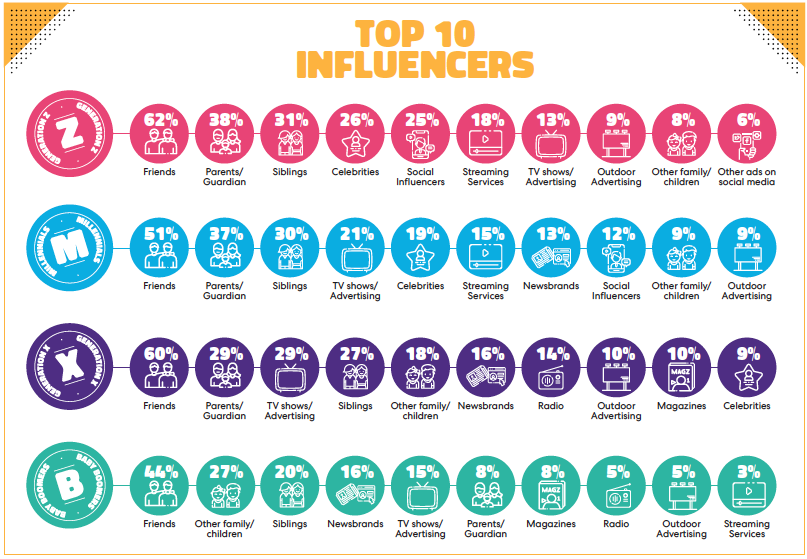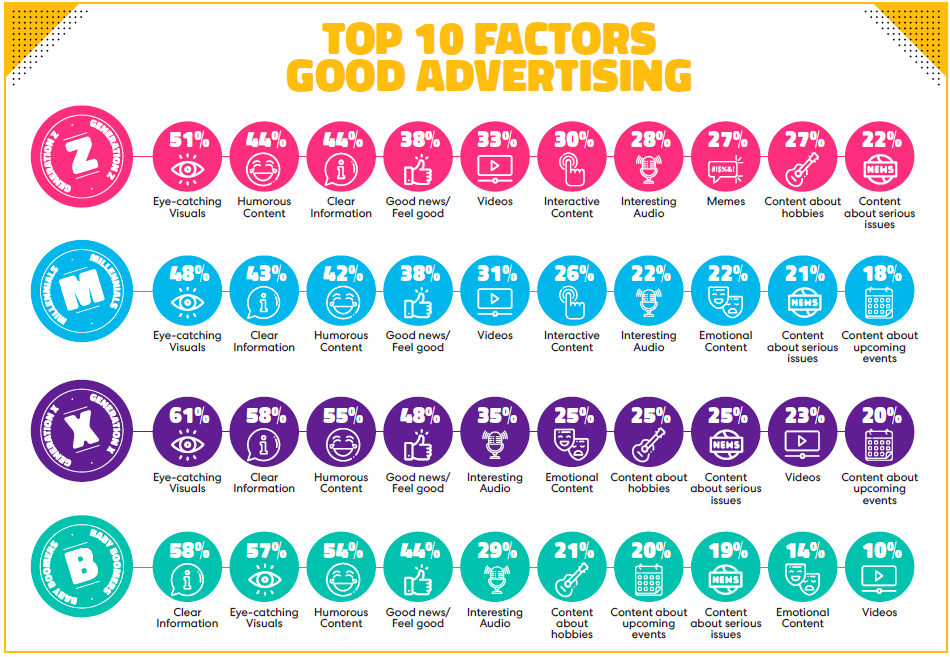The rise of intergenerational influence?

Image: Getty Images/Mail Metro Media
Partner content
Two in five Gen Z and Millennials say their parents are an important influencer in brand choice, and children are the No.2 influencers for Baby Boomers. With one in three homes now multi-generational*, are brands taking each generation seriously enough?
According to a recent quantitative cross-generational study from Mail Metro Media, 38% of Gen Z and 37% of Millennials in the Great British population claim their parents or guardians are one of the most important influencers in their choice of brands – outranking both celebrities and social influencers.
Pay attention to parent power
In The Generation Factor, parents rank as the number two brand influencer across three in four generations.
Mail Metro Media’s research also highlights the power of parents; seven in 10 Millennials have received financial help from their parents – for example, to buy a car (22%) or fund holidays/treats (20%)** – yet these older audiences are often undervalued and misrepresented in advertising. So much so, 43% of Baby Boomers claim ‘un-relatable imagery’ in advertising is a top turn off for them.
Baby Boomer parents – AKA ‘the Bank of Mum and Dad’ – not only hold a disproportionate amount of wealth, they possess a disproportionate number of skills too. Boomers are twice as likely to have practical skills as Gen Z and are significantly more likely to value practicality in others.
So, older generations have the skills, the ability to pay the bills and high levels of influence.
In the age of hypertargeting, these facts reaffirm the importance of mass communication and appealing to multiple audiences. As well as attracting the perceived core consumer, there is real value in talking to the older generations who are key influencers to Gen Z and Millennials.
With an increase in intergenerational living and financial dependence on each other, particularly as younger populations continue to be more economically impacted by Covid-19, there has never been a better time to put the emphasis on ‘parent power’.

Britishness and brands in 2021
Admittedly there is much that divides the generations, none more so than the idea of ‘Britishness’.
Younger generations are significantly less likely to say ‘Britishness’ is important to their identity, and they’re also less likely to say they like their brands British, too.
In today’s delicate socio-political climate, ‘Britishness’ can be a minefield for brands – however the pandemic-induced threat to local businesses and high streets has influenced a shift towards buying local.
By celebrating what it means to be ‘british with a small b’ (think hard work, sub-cultures, diversity and a love for local) there’s an opportunity for brands to tap into that which unifies all ages and to inspire pride across the generations.
Targeting the whole household
With Brexit, the Black Lives Matter movement and Covid-19 highlighting diverging opinions among generations, Mail Metro Media’s research also highlights the unifying factors that all generations agree make “good advertising” – namely eye-catching creative, humorous content and feel-good messaging.

These unifying factors can be used to create broad reaching messages to consumers, and given Mail Metro Media’s first-hand knowledge of these audiences through its portfolio, the newsbrand publisher has created five simple tips for brands to speak to every generation:
- Make them laugh – the appetite for humour is larger than ever. Let your brand be the one to make consumers smile.
- Put family first – family is the No.1 priority for all generations, so featuring families and their quirks is likely to trigger a positive emotional connection.
- Initiate genuine connections – build authentic connections with local communities and causes and champion everyday heroes from all walks of life.
- Encourage social exchanges between the generations – encourage different generations to listen to, share skills with and learn from each other.
- Make green the mainstream – every generation cares about the environment, so make staying/choosing green easy and affordable.
What is the generation factor and why are all generations important audiences?
Recognising a market saturated with Gen Z and Millennial studies alongside advertising often flawed with outdated, ageist stereotypes, Mail Metro Media set out to take a more balanced look at the aspirations and attitudes of every generation.
Created using a 20 minute quantitative survey of 1,200 people aged 16-73, with 300 respondents in each generation, The Generation Factor delves into four distinct categories: personal, media, brands, and advertising, laying bare the factors that unite, as well as divide, young and old.
Of the Great British population, Mail Metro Media reaches 62% of Gen Z, 71% of Millennials, 71% of Gen X and 63% of Baby Boomers.
Luke Hand, Mail Metro Media’s head of insights, said: “Generational analysis is a popular way of understanding how different formative, period and cohort experiences shape people’s view of the world. In a post-Brexit and mid-pandemic Britain, there has never been a more interesting time to look at the nation through a generational lens.
“We hope that The Generation Factor serves as a useful planning resource to help enhance understanding of the generations and their reactions to the key issues of the day, as well as how to best target and engage them.”
Within the dedicated online hub, you can explore and download the full report, a slide library of key graphs and findings, a one-page guide to engaging with each generation and an interactive tool to access raw data at your fingertips.
Visit https://www.mailmetromedia.co.uk/thegenerationfactor/ to find out more.
*SOURCE: This is Money
**SOURCE: Mail Metro Media Finance Research 2020



